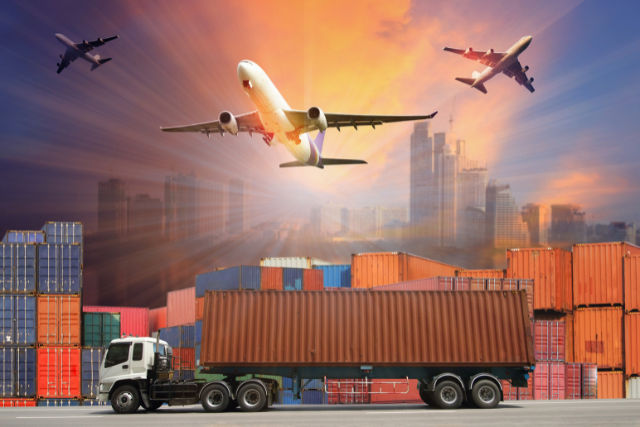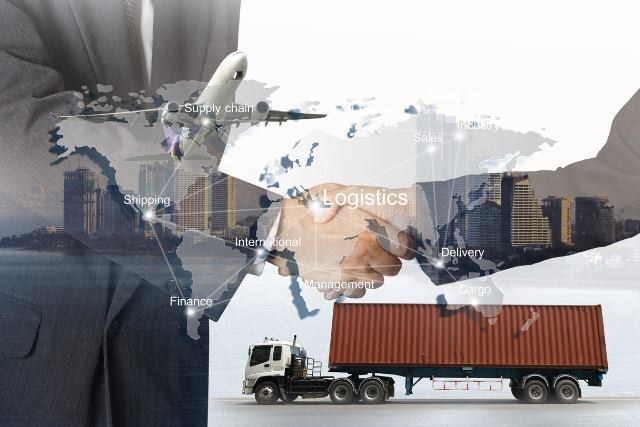Import-export compliance is a critical aspect of global trade that businesses must master to avoid costly penalties and streamline their international operations.
In today’s interconnected world, staying compliant with global trade regulations, correctly classifying goods, and implementing robust documentation processes are essential strategies for any business involved in cross-border transactions.
This comprehensive guide will explore key strategies and tools necessary for mastering import-export compliance, enabling you to navigate international trade with confidence.
Key Takeaways
- Leverage compliance software to monitor regulatory changes and seamlessly integrate with your existing systems.
- Regularly update and verify the classification of goods using Harmonized System (HS) codes to ensure compliance.
- Implement robust documentation processes and utilize digital tools for enhanced accessibility and audit readiness.
- Engage in continuous employee training programs to maintain understanding and adherence to international trade regulations.
- Stay informed about tariff and tax implications in target markets to optimize cost structure and pricing strategies.
Understanding Global Trade Regulations
Navigating the intricate landscape of global trade regulations is crucial for businesses engaged in international commerce. Every country has its own set of rules regarding tariffs, trade agreements, and customs procedures.
Importance of Staying Informed
To stay compliant, you must remain updated on the vast array of international trade laws that vary from country to country. Familiarize yourself with the World Trade Organization (WTO) agreements, which provide the legal ground rules for international commerce.
These agreements are essential for predicting trade terms, which is vital for planning your market strategies.
Pay close attention to regional trade agreements like NAFTA or the European Union, as they can significantly impact your trading conditions depending on your operational regions.
Record-Keeping and Transparency
Compliance also involves maintaining meticulous records and being transparent in all your dealings. Ensure that every transaction is well-documented and that you are prepared for inspections or audits.
Ignorance of the law is not a valid defence, and penalties for non-compliance can be severe, including fines, trade bans, and damage to your company’s reputation. By staying informed and proactive, you can successfully navigate the complex waters of global trade.
Classifying Goods Correctly
Correctly classifying goods is a crucial step in ensuring compliance with international trade regulations. This involves assigning the correct tariff codes from the Harmonized System (HS), which standardizes product categories across global borders. Accurate classification not only ensures compliance but also helps avoid potential fines and shipment delays.
Steps for Accurate Classification
Start by identifying the material and intended use of your product. This process might seem straightforward, but complexities can arise due to the specific nature or components of your goods. For instance, the classification of electronics can vary based on their primary application. It’s not just about what the product is, but how it’s used.
Consult the HS manual as a starting point, but don’t rely on it exclusively. When in doubt, seek advice from customs advisory services or trade compliance experts. Misclassification can lead to severe penalties or delays in shipment clearance, so precision is vital.
Staying Updated on Tariff Codes
Keep abreast of changes in tariff codes and international trade agreements, as these updates can affect classifications and your compliance status. Regularly reviewing and updating your product classifications is essential to staying compliant and avoiding potential disruptions in your trade operations.
Implementing Robust Documentation Processes
Streamlining your company’s record-keeping techniques and enhancing audit preparedness are vital steps toward improving compliance with import-export regulations. Effective documentation processes not only safeguard against legal challenges but also simplify internal audits, ensuring that your business is always prepared for external scrutiny.
Streamlining Record-Keeping Techniques
Effective record-keeping is essential for maintaining compliance in the import-export industry. The transition from manual to electronic documentation reduces clutter and improves retrieval times. Utilize cloud storage solutions for any time, anywhere, access to your records, which is particularly useful when dealing with international partners across different time zones.
Categorize your documents systematically by type, date, or relevance, making it easier to find exactly what you need without sifting through piles of paperwork. Regularly review and update your records to keep them current and compliant.
Enhancing Audit Preparedness
In addition to record-keeping solid practices, implementing robust documentation processes is crucial for enhancing your audit preparedness. Thorough and accurate documentation is not just a best practice but a regulatory necessity in managing import-export operations.
Ensure that every transaction, no matter how small, is documented with precision, including detailed records of invoices, shipping documents, receipts, and compliance certificates.
Organize your documents systematically, whether by chronological filing or based on product type or destination country. Consistency is critical in ensuring that your documentation process is audit-ready. Regularly schedule audits of your documentation process to identify and address any gaps in your records, thus preparing your business for official audits and reducing the risk of non-compliance.
Utilizing Compliance Software Solutions
Leveraging compliance software is essential for streamlining import-export operations and ensuring adherence to ever-changing global trade regulations. Choosing the right software that aligns with your business needs and integrating it seamlessly with your existing systems can significantly enhance your compliance efforts.
Choosing the Right Compliance Software
When selecting compliance software, prioritize tools that simplify complex regulations and ensure that you are always aligned with the latest trade laws. Look for features that offer real-time updates on regulatory changes and can handle multiple countries’ compliance requirements.
The software should be user-friendly, with an intuitive interface and strong customer support, ensuring that your team can quickly adapt to it.
Scalability is another critical factor to consider. As your business grows, your compliance needs will evolve. Investing in scalable software now can save you from the hassle of switching systems later, allowing the software to grow with your business and adapt to new challenges.
Integration With Existing Systems
After selecting the right compliance software, focus on integrating it seamlessly with your existing systems. Start by mapping out your current data flows to identify touchpoints where the new software will connect. Engage your IT team early to customize interfaces and ensure that the software communicates effectively with your ERP, CRM, and other critical systems.
Training is also crucial to a smooth transition. Tailor your training sessions to different departments, ensuring that your team understands not only how to use the software but also why it is essential for compliance.
Monitoring Regulatory Changes
Staying compliant requires constant vigilance in monitoring regulatory changes. Compliance software solutions are designed to keep you updated with the latest requirements in the complex landscape of international trade.
These tools automatically track changes in laws and regulations across different countries and industries, alerting you to relevant updates and providing actionable insights for immediate implementation. This proactive approach minimizes risks and enhances your ability to plan and execute business strategies effectively.
Navigating Tariff and Tax Implications
Understanding the tariff and tax implications of your trade activities is crucial for maintaining compliance in international trade. These aspects significantly affect your cost structure and market competitiveness, making it essential to stay informed about how they apply to your products and target markets.
Understanding Tariffs and Taxes
Start by accurately determining the Harmonized System (HS) codes for your products, as these codes are used globally to classify traded products and determine the tariffs applied. Misclassification can lead to incorrect tariff applications and hefty fines, so accuracy is paramount.
Trade agreements also play a critical role in tariff and tax implications. Many countries have agreements that reduce or eliminate tariffs, so it is essential to check if your products qualify under these agreements.
Be aware of the value-added tax (VAT) or goods and services tax (GST) rates applicable in your target markets, as these taxes can significantly impact your pricing strategy.
Regular Compliance Training Programs
Regular compliance training programs are vital for keeping your team up-to-date with the latest regulations and best practices in international trade. These programs ensure that your employees are well-equipped to handle the complexities of import-export compliance, reducing the risk of costly errors and enhancing overall compliance efforts.
Benefits of Ongoing Training
Global trade regulations are constantly evolving in response to political, economic, and social changes. Without ongoing training, your team is more likely to encounter compliance issues that can lead to fines or legal challenges. Regular training sessions keep critical details at the forefront of your team’s mind, ensuring that they are always prepared to navigate the complexities of international trade.
Incorporate a variety of training formats, such as online courses, workshops, and seminars led by industry experts, to cater to different learning styles. Tailor the content to the specific needs of your business, and track participation to assess the effectiveness of your training program.
By investing in regular compliance training, you can ensure that your business remains compliant with the latest trade regulations and continues to operate smoothly in international markets.
Frequently Asked Questions
How Do Cultural Differences Impact Import-Export Compliance Strategies?
Cultural differences significantly impact import-export compliance strategies. Understanding local customs and regulations is crucial to ensuring that your business operations do not unintentionally violate norms or laws, which could lead to penalties or damaged relationships with international partners.
What Are Common Penalties for Non-Compliance in International Trade?
Common penalties for non-compliance in international trade include fines, trade restrictions, and legal action. Penalties vary by country, but they all aim to enforce adherence to import-export regulations. Non-compliance can also damage your business’s reputation and lead to long-term operational challenges.
How Does Political Instability Affect Import-Export Regulations?
Political instability can lead to frequent changes in import-export regulations, complicating compliance and increasing the risk of penalties. Staying updated on regulatory changes and understanding how political shifts impact trade laws are crucial for navigating these challenges effectively.
Can Small Businesses Benefit From Free Trade Agreements?
Yes, small businesses can benefit significantly from free trade agreements. These agreements often reduce tariffs, increase market access,
and provide competitive advantages that can enhance business growth and profitability.
How Frequently Do Import-Export Regulations Change Globally?
Import-export regulations change frequently across the globe, affecting how businesses operate in international markets. Staying informed about these changes is essential to avoiding compliance issues and ensuring that your business remains competitive and operationally efficient.
What Are the Most Effective Tools for Import-Export Compliance?
The most effective tools for import-export compliance include compliance software, HS code classification tools, and robust documentation processes. These tools help businesses stay updated on regulatory changes, ensure accurate product classification, and maintain organized and audit-ready documentation.
Conclusion
Mastering import-export compliance is essential for any business involved in global trade. By staying updated on global regulations, accurately classifying your goods, and implementing robust documentation processes, you can ensure compliance and streamline your operations.
Leveraging compliance software and staying informed about tariffs and taxes will further enhance your ability to navigate the complexities of international trade.
Finally, regular training programs will keep your team sharp and your business compliant with the latest regulations, helping you avoid costly penalties and ensuring long-term success in the global marketplace.







